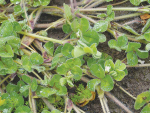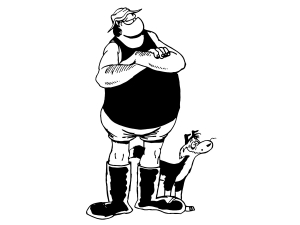Stick to your knitting and fine-tune what you do, advises Beef + Lamb NZ chairman James Parsons, for farmers to get through the next year, with forecasts down for lamb, beef and wool.
“My personal perspective on this is it’s easy to get down about a certain product mix we are producing, in this case sheep,” Parsons told Rural News.
“But I think farmers should be cautious about suddenly changing stock policies in any large fashion.
“In a few years lamb will be up and beef will be down. Things swing in roundabouts – you probably just need to stick to your knitting and fine-tune what you do. That’s the approach I will take in my own business.”
Parsons says forecasts “are just that, they are forecasts and they are notorious for being wrong”. (see sidebar)
“I’d like to think it won’t get any worse than we are predicting,” he says.
Often with not-so-good predictions, things turn out a bit better, “but it is prudent for farmers to budget for a conservative income this year and let’s hope we come in a lot better than that”.
Currency is the biggest factor for sheepmeat, Parsons says. The NZ dollar (NZ$) has jumped significantly against the English pound (GBP) and the NZ$ is also a bit stronger against the euro.
UK accounts for about 25% of the lamb particularly around Christmas and Easter and it is a big component of the leg market. “So when the UK is back it makes things tougher,” he says.
He understands the UK retailers are paying more in GBP for our lamb than last year, “but we don’t see that back in NZ because it is not enough to counteract the strong NZ$”.
Marks and Spencer have decided to go with Scottish lamb for a small component of their chilled lamb in Scottish supermarkets.
“We are seeing more of a trend towards retailers supporting British farms. But I think there is a bit more in it too; it is a convenient one to run right now when the pound is so weak.
“They can say they are supporting British farmers – that is the way they pitch it – but actually it is cheaper to buy from British farmers.”
He says the Irish are also doing it tough with the euro up against the GBP: they export 80% of their production and most goes to the UK. It is also affecting their beef exports to the UK.
A positive in the BLNZ forecasts is mutton up 13% driven by China picking up. China was strong in the ‘boom’ years but has slowed in the last couple of years.
“Some of that is working through now and we are starting to see more interest from China, so that’s positive.”
Parsons adds that with beef a few other countries have started ramping up production.
“We’ve seen a lot more out of the US. It is not like the US is awash with beef from Brazil but there’s a bit more beef coming from other countries.
“On the positive side, Australia’s production is down significantly as they have had rains and started to rebuild. We saw a lot of drought-induced slaughter of animals and liquidation of the beef herd during the last couple of years of drought but that has all dried up big-time now.
“Beef is back a wee bit, so that’ll soften things a little. Obviously wool is not quite as buoyant as 12 months ago.
“That doesn’t get talked about as much, but it is another reasonable driver of farm income for sheep farmers.”
Parsons says the recently revised strategy for BLNZ is marketing initiatives to target new markets as a long term proposition.
“It will be a few years before we start seeing really good fruit from it, but I think within 12 months we will know if we are on the right track.”
Forecasts down
Beef + Lamb NZ forecasts average lamb prices will be down 3% this year to $4.85/kg, or $89 a head, for 2016-17.
Prices have declined gradually since 2013-14 when lamb was reaching $5.48/kg and $100/head.
Mutton is stronger, predicted to be up 13%/kg to $2.58/kg and up to $65/head.
The beef forecast is also down, with a 9% drop for steer and heifer at $4.84/kg, and bull is also down 9% at $4.74/kg and cow down 4% at $3.78/kg.
Although this is down against the previous two years prices, by comparison in 2013-14 steer and heifer were $4.09/kg, bull $3.92/kg and cow $2.78/kg.
Fine wool prices are forecast to be up 1% to $10.05/kg greasy, but medium is down 2% to $7.23/kg and strong down 16% to $43.72/kg.
The exchange rate forecast has the NZ$ up 13% against the British pound, down 2% against the euro and 1% against the US$.



















